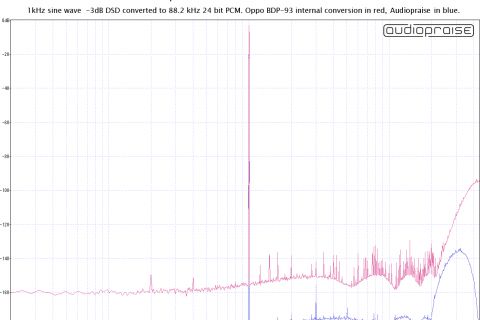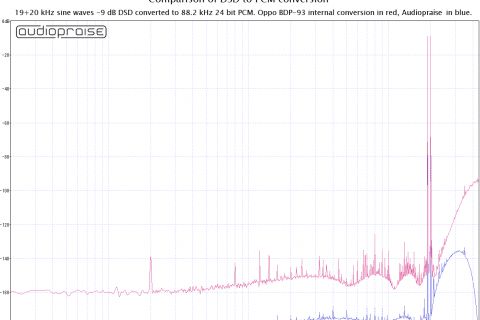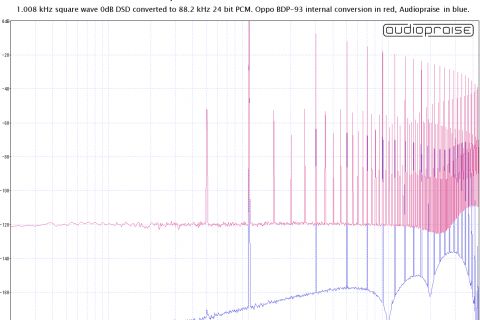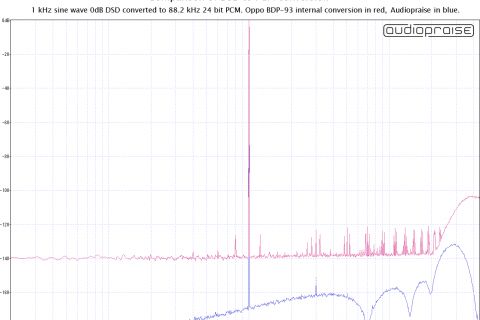DSD to PCM Conversion
- Homepage
- Services
- FPGA Cores
- DSD to PCM Conversion
- FPGA Cores
- Services
This core, probably the most popular one, converts 1-bit Sigma-Delta modulated bit-stream (DSD) into standard LPCM format. DSD is not only the modulation scheme used on Super-Audio CDs, these days DSD downloads and streaming is getting more and more popular as an audiophile format too. It can be also found in mixing consoles, professional recorders and other pro-equipment.
Modern monolithic DAC chips usually also accept digital audio in DSD format. So, why would anyone need a stand-alone DSD to PCM converter? The reason here is a bit tricky to explain and it is related to one of the main selling points of SACDs/DSD, namely, a significant simplification of the reproduction chain. DSD has some interesting properties and one of them is the fact that the modulated audio signal is located in the base band. Therefore DSD only needs to run through a low pass filter to convert the audio signal to the analogue domain – which is called native DSD conversion. There are only a couple of monolithic DACs in the market that convert DSD natively, usually using a switched capacitor network. The vast majority of DAC chips are optimized for PCM conversion and DSD is internally converted to PCM first and then converted to analogue as a standard PCM signal. Unfortunately, the internal conversion is usually far from being perfect. Digital filters that decimate the DSD signal allow too much of the ultrasonic noise and other non-linear products of a DSD modulator to fall back into the base band - adversely affecting the audio part of the signal.
Our conversion characteristics can be summarized as below.
DSD64/128/256 to PCM@88.2/176.4/352.8kHz
Selectable filter characteristics
Full resolution (>48bit) accumulator
TPDF dithering to 16/24/32 bits
Our DSD to PCM conversion is based on high stop-band attenuation decimating filters with a carefully designed filter response in the frequency as well as the time domain. Any aliasing that naturally occurs during the decimation process is minimized to an absolute minimum to preserve the audio intact.
DSD exists in several speed variants, which are commonly even multiples of the base speed of 2.8224MHz. This frequency is 64x44.1kHz (64x CD sampling rate), that is why it is usually called DSD64. Higher speeds are just double or quadruple of the base one – DSD128, DSD256. There already is some equipment in the market capable of DSD512 or even DSD1024, but these are not practically very usable due to high bandwidth requirements and lack of content. The resulting PCM sampling rate of the converted signal is usually selectable in multiples of 88.2 kHz. There is probably no point of going above 352.8 kHz, because the useful bandwidth of DSD at any speed is around 50-60kHz. The rest is just noise. Similarly, there is usually no reason for converting DSD to 44.1 kHz since virtually all SACDs come with CD layer already.
Selectable filter characteristics allow the user to choose the filter that sounds the best with the rest of the system. The subtle differences are in roll-off, bandwidth and time domain response.



